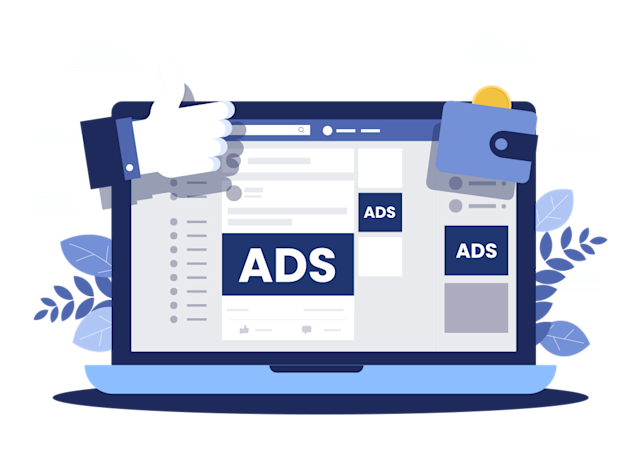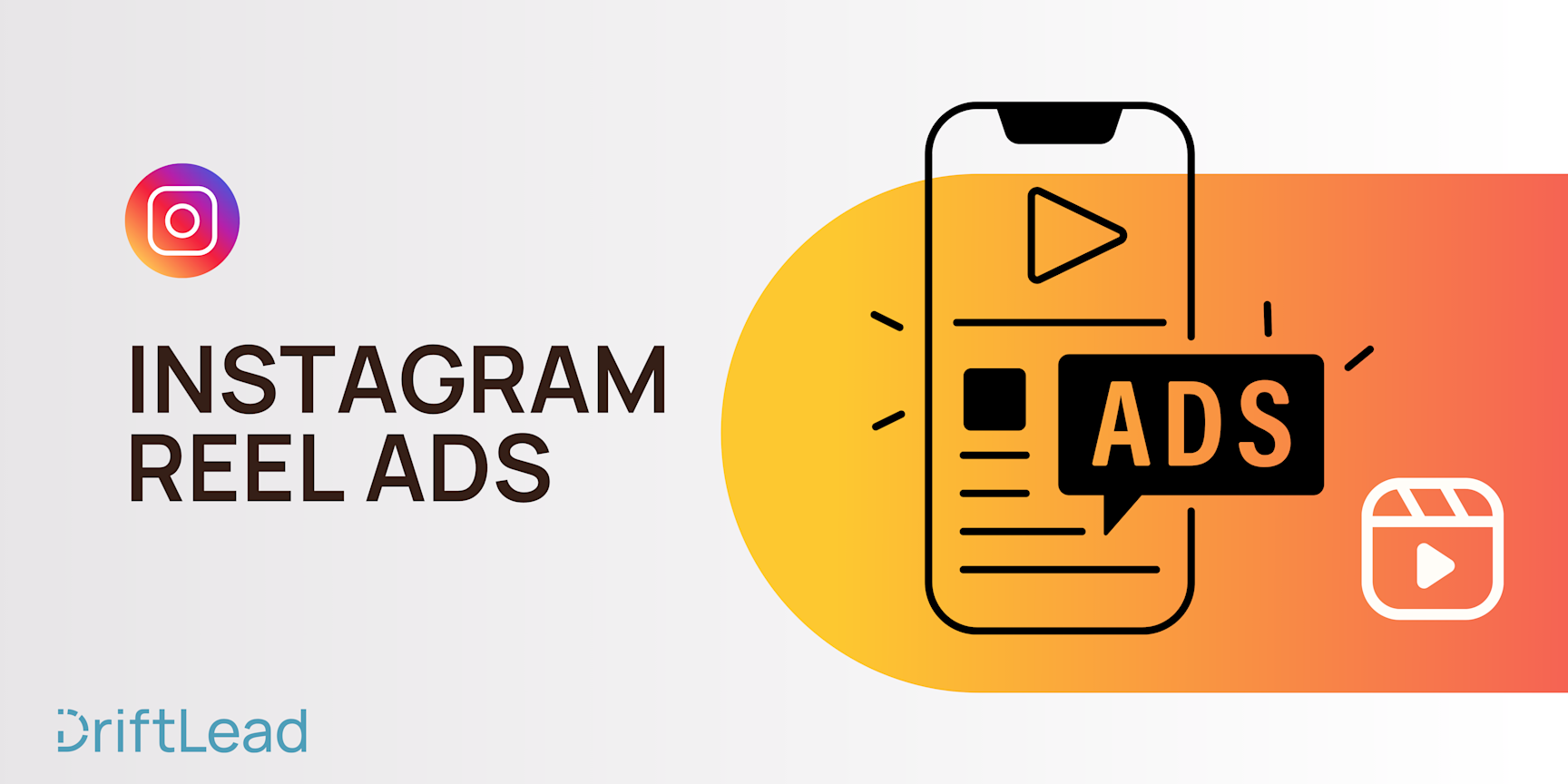Facebook Ads Reach vs Impressions: The Difference and Why It Matters
31 Aug, 2023
In this post, we will iron out the differences between Facebook reach and impressions and dive into some other key metrics of a campaign.

Jump to:
#social
Hop on our weekly newsletter train! We're sharing tips so stellar, we're practically job-threatening ourselves!
So you've been flexing your advertising muscles on Facebook, but you're a bit puzzled by all the jargon—reach, impressions, CTR, and so on. It's like trying to find your way through a new city without a map; you might hit some landmarks, but you're probably missing out on the best spots.
Don't worry; we've got you covered. In this guide, we'll break down the key differences between reach and impressions on Facebook Ads, along with other critical metrics. It's time to add some clarity to your advertising journey so you can make better decisions and elevate your game. Trust us, it's simpler than you think.
Why Knowing the Difference Matters 🤔
Think of reach and impressions as your marketing DNA; they form the basis of all your advertising decisions on Facebook. Knowing what each metric stands for helps you understand your campaign's performance better, and let's face it—better understanding equals better ROI.
Facebook Ads 101: A Mini Glossary 📖
So you've got your Facebook Ads campaign up and running—congratulations! But the journey doesn't end at "Publish." Like a well-oiled Scranton branch, a successful advertising campaign relies on monitoring and analyzing certain key performance indicators (KPIs). Here's a quick rundown to help you make sense of the metrics that matter.
Click-Through Rate (CTR) 🖱️ This measures the percentage of people who clicked your ad after seeing it. It's a good indicator of how compelling your ad is. Think of it as the "Jim Halpert"—it's about both visibility and action.
Conversion Rate 🔄 The percentage of users who took the desired action (e.g., made a purchase, filled out a form) after clicking your ad. It's the "closing the sale" moment, and you definitely want this rate to be high. That's what she said.
Cost Per Click (CPC) 💵 The average amount you pay for each click on your ad. This is where budget management becomes crucial. You don't want a "Michael Scott splurging on an unnecessary espresso machine" situation.
Cost Per Mille (CPM) 🎯 This is the cost for 1,000 views of your ad. Unlike CPC, this focuses on impressions rather than clicks. Consider this the "Casual Friday"—everyone sees it, but not everyone engages.
Frequency 🔄 How often an individual user sees your ad. Be cautious here; too high a frequency could be annoying, like hearing "That's what she said" one too many times.
Quality Score 🌟 Based on user feedback and engagement, this score influences how much you'll pay per click and your ad's placement. Think of this as your "Employee of the Month" rating; higher is better.
Return on Ad Spend (ROAS) 💰 The revenue you earn for every dollar spent on advertising. A high ROAS is the ultimate goal, like landing that "World's Best Boss" mug on your desk.
Reach 🌐 The total number of unique users who saw your ad. It’s all about spreading the word, similar to the way office gossip makes its rounds—though ideally with more positive results.
Ad Relevance Diagnostics 🛠️ These provide insights into how relevant your ad is to the audience you’re targeting. Aim for a perfect score, just like Kevin aimed for in his famous chili recipe—before the spill, of course.
Armed with this glossary, you're well on your way to decoding the metrics that will guide your Facebook Ads campaign to greatness.
Facebook Ads Anatomy: Reach vs Impressions 🤔
Alright, now that you understand the key metrics, let's get into the meat of the sandwich which, in this case, is "Reach" and "Impressions." Deciphering between these two metrics can be as puzzling as trying to figure out the Scranton Strangler's identity. But unlike Toby's jury duty stint, this won't take forever to explain.
Reach 🌐
When we talk about "Reach," we're referring to the number of unique individuals who saw your ad. Let's say you post an ad, and 500 different people see it. Your reach is 500. Simple, right? Reach is basically about spreading your message far and wide, but to unique sets of eyes.
Impressions 🔄
Impressions, on the other hand, count the total number of times your ad was displayed on someone's screen. So if Jim passes by Pam's desk 10 times in one day to make flirty eye contact, that counts as 10 impressions. Why? Because each pass (or glance) counts as a separate 'view' or 'impression,' even if it's by the same individual (reach.)
If your ad pops up multiple times on a user's screen because they belong to different, overlapping target segments (like fans of both "beets" and "Battlestar Galactica"), then you can expect a higher number of impressions compared to reach.
So Which Metric Should You Focus On? 🎯
It really depends on your campaign objectives:
Reach: If you're looking to increase brand awareness or are launching a new product, a larger reach might be more beneficial to you. In 'The Office' universe, reach would be like Kevin finally achieving his dream of telling everyone about his famous chili.
Impressions: If you have a limited-time offer or promotion, focusing on impressions can create that sense of urgency or familiarity. Just like hearing the "Dunder Mifflin, this is Pam" greeting over and over again makes it stick in your mind, multiple impressions could potentially lead to higher engagement.
In a nutshell, reach gives you width, while impressions give you depth. Your marketing strategy can benefit from paying attention to both but aligning with your specific goals will give you the most bang for your buck.
Pro Tips: Maximizing Your Metrics 🚀
Welcome to the next level of Facebook Ads! Now that you've got the basics down, let's talk strategy to make sure you're getting the most out of your metrics. Whether you're looking to grow your reach or boost impressions, here are some pro tips that even Jim Halpert would give a nod of approval to.
For Upping Your Reach Game 🌐
Audience Insights: Use Facebook's Audience Insights tool to better understand your target demographic. Fine-tune your ad settings for a more focused reach, similar to how Jim would finely calibrate a prank on Dwight.
High-Quality Content: Stand-out content naturally expands your reach. Create something so compelling that it demands interaction, like a truly unforgettable Michael Scott quote.
Time It Right: Knowing when your audience is most active can make all the difference. You don't want your ads to go unnoticed, much like Toby in a Dunder Mifflin staff meeting.
For Boosting Impressions 🔄
Frequency Capping: Setting limits on how often your ad appears to the same person can help you avoid oversaturation. Balance is key.
Retargeting: Sometimes the second (or third) interaction with your brand can be the charm that leads to conversion. Make your retargeting strategy count.
Highly Relevant Creatives: Relevant ads naturally draw more impressions and engagement. Make sure your ad speaks to your audience's needs and interests.
Bonus: A/B Testing 🎯
Can't decide which metric to focus on? Consider A/B testing. Run two slightly different versions of an ad simultaneously to see which one yields better results. It's a strategy even the pragmatic Jim Halpert would find efficient.By applying these strategies, you'll be well on your way to maximizing both reach and impressions. Think of it as your promotion from the annex to the corner office.
Common Pitfalls and How to Avoid Them 🚫
Congratulations, you've made it this far! Now that you're armed with pro tips, let's make sure you don't stumble on some all-too-common hurdles. In the spirit of Dunder Mifflin's "Safety Training" day, here's a guide to Facebook Ads pitfalls and how to steer clear of them.
Over-Targeting 🎯
The Pitfall: Just because you can target your Facebook Ads down to the minutest detail doesn't mean you should. Over-targeting can limit your audience too much and make your campaign less effective.
The Fix: Diversify your targeting a bit. This doesn't mean you go full-on Creed Bratton and do something totally bizarre; just don't put all your eggs in one basket.
Ignoring Metrics 📊
The Pitfall: Turning a blind eye to metrics is akin to Michael Scott ignoring the financial troubles of Dunder Mifflin. It's going to catch up to you.
The Fix: Always keep an eye on key performance indicators like ROI, CTR, and CPA. Metrics give you actionable insights. Ignore them at your peril.
Poor Ad Design 🎨
The Pitfall: Rushed or irrelevant ad creatives can make your campaign fall flat. It's the ad equivalent of holding a meeting with no agenda—something even Michael Scott would find pointless.
The Fix: Invest time and resources into creating compelling visuals and copy. Your ad should be as engaging as one of Jim's classic pranks—but more constructive.
Setting and Forgetting 🛠️
The Pitfall: One of the biggest mistakes is thinking your ad will run itself successfully without any adjustments. That's like expecting Kevin to accurately keep the books.
The Fix: Regularly check and adjust your ad campaign settings. Experiment with A/B testing and use the data to optimize your strategy.
Budget Blowout 💸
The Pitfall: Lack of budget control can quickly deplete your funds.
The Fix: Set daily or lifetime budgets and stick to them. Keep track of your spending and make sure you're getting a good ROI.
In summary, advertising is an ever-evolving landscape. But with these tips to avoid common pitfalls, you'll navigate it like a pro.
FAQs: Reach and Impressions Unveiled 🤓
The enigmatic world of Facebook metrics—confusing at first, but oh-so-revealing once you get it. Let's dive into some of the most frequently asked questions about two key terms: Reach and Impressions.
What are Impressions? 🤔
Question: How are "Impressions" different from "Reach"?
Answer: Impressions count the total number of times your ad was displayed on someone's screen, regardless of whether they've seen it before.
Reach vs. Impressions: Which is More Important? 🎯
Question: Which metric should I prioritize: Reach or Impressions?
Answer: It's not about choosing one over the other; it's about what best aligns with your campaign goals. If you want to get your message out to a wider, yet specific audience, then focus on Reach. If you're interested in how often your ad resonates (or doesn't) within that audience, then Impressions are your go-to metric.
How Can I Increase Reach and Impressions? 📈
Question: Are there best practices for increasing both Reach and Impressions?
Answer: Absolutely! To widen your Reach, you may need to re-evaluate and expand your target audience or reduce your frequency caps. As for Impressions, make sure you have a sufficient budget, refined audience, and even compelling and eye-catching creative can make a big difference. Also, don't be afraid to experiment with ad placements.
Do High Impressions Guarantee Engagement? 💡
Question: If my ad has a lot of Impressions, does that mean people are definitely engaging with it?
Answer: Not necessarily. High Impressions simply mean your ad has been displayed a lot. Whether people interact with it is a separate matter, similar to how Pam's art show had attendees, but only a few truly engaged with the art.
Remember, both Reach and Impressions are valuable metrics, but they're just two pieces of the puzzle. Utilize them effectively and you'll be better at running your campaigns than Dwight is at running the Party Planning Committee.
Conclusion: Your Roadmap to Facebook Ads Success 🌟
Deciphering the labyrinth of Facebook advertising metrics doesn't have to feel like you're stuck in the most complex episode of "The Office," where relationships twist and plots unfold at every turn.
It's all about aligning your goals with the right metrics. Reach is your go-to for understanding how many unique eyes lay upon your content, while Impressions give you the nitty-gritty on how often your ad captures attention—be it a fleeting glance or a double-take. Use these metrics wisely, and you won't find yourself in any awkward Michael Scott-like situations where you have to explain why your campaign flopped.
And of course, don't forget to consult the experts (ahem...us). If you want some extra help planning or managing your campaigns for optimal results, request a free marketing plan!






